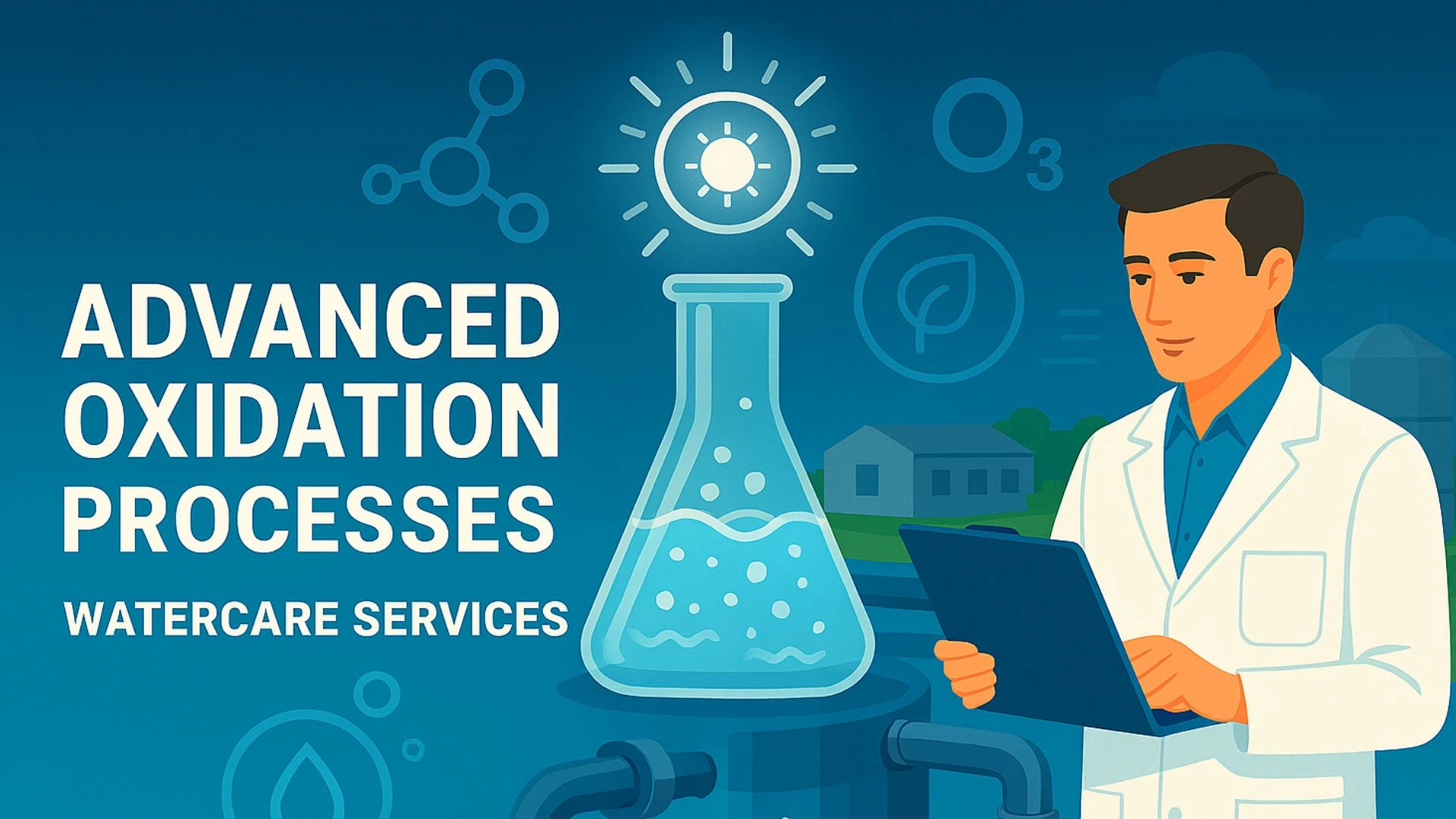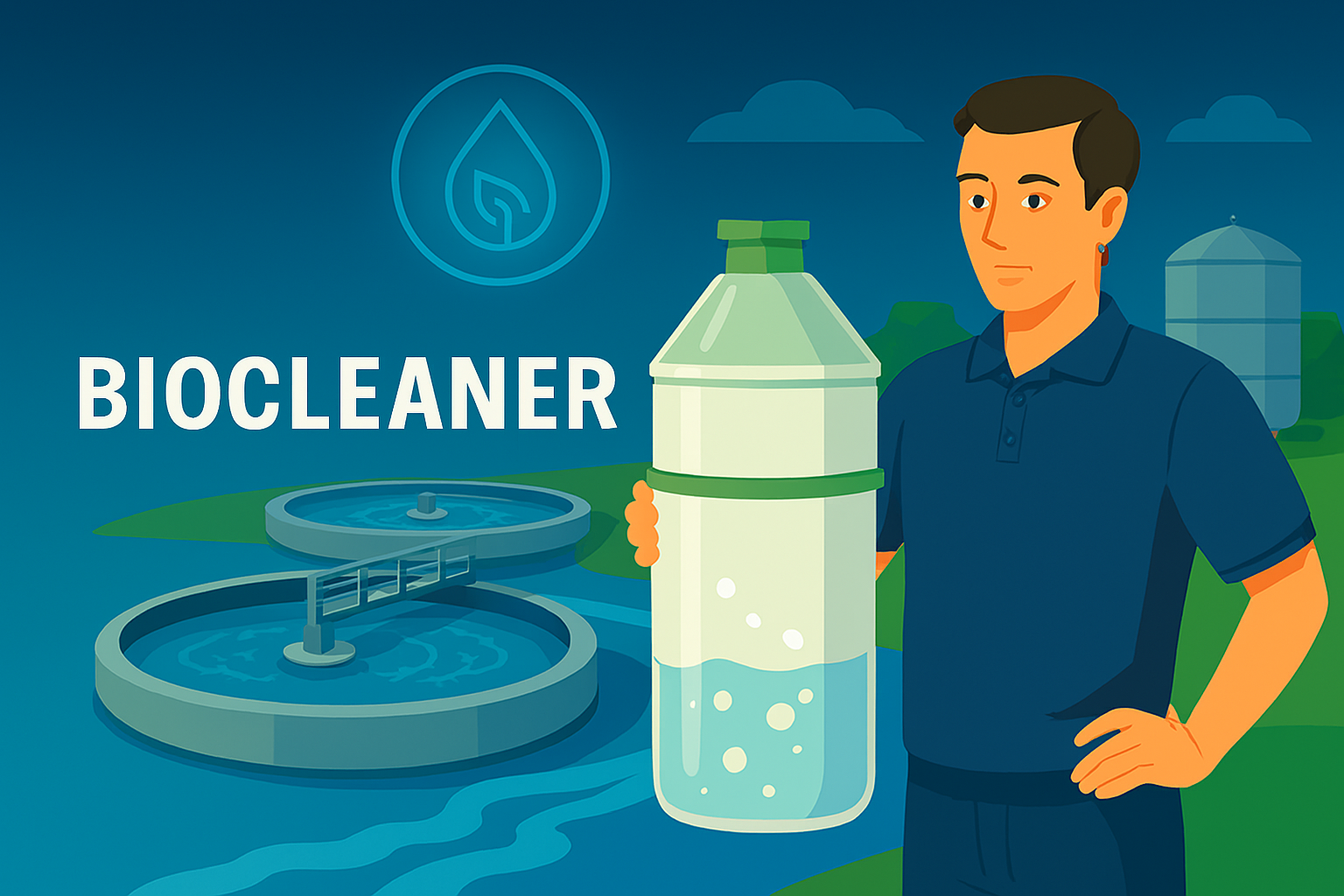Have you ever wondered how wastewater treatment plants are able to tackle some of the most stubborn pollutants in our water systems? Traditional treatment methods often struggle to fully break down certain chemical pollutants, which can persist in the environment for years. That’s where Advanced Oxidation Processes (AOP) come into play. AOPs are revolutionizing wastewater detoxification, offering a powerful solution to break down these persistent contaminants. But what exactly is AOP wastewater treatment, and how does it work to purify water effectively? Let’s dive in and explore the future of water purification techniques through the lens of AOP.
What Are Advanced Oxidation Processes (AOP)?
Advanced Oxidation Processes (AOP) refer to a set of highly effective water treatment techniques designed to remove complex, persistent, and non-biodegradable pollutants from wastewater. AOPs use powerful oxidants, such as ozone, hydrogen peroxide, and UV light, to generate hydroxyl radicals, one of the most reactive chemical species known. These radicals break down organic pollutants into harmless substances, like water and carbon dioxide.
The beauty of AOP wastewater treatment lies in its ability to degrade pollutants that are difficult to remove with traditional methods, such as chemical contaminants and pharmaceuticals. Unlike conventional biological treatment methods, AOPs can break down pollutants at the molecular level, rendering them harmless even in trace amounts.
How Do AOPs Work in Wastewater Treatment?
The core principle of AOPs is to generate hydroxyl radicals (OH•), which are extremely reactive and capable of attacking a wide range of pollutants. This process involves a combination of different agents to produce these powerful radicals:
- Ozone (O₃) and UV Radiation:
When ozone is exposed to UV light, it decomposes into highly reactive oxygen atoms, which then form hydroxyl radicals. This combination is used to treat organic pollutants effectively by breaking down their molecular structures. - Hydrogen Peroxide (H₂O₂):
Hydrogen peroxide can also generate hydroxyl radicals when activated by UV light or ozone. In some cases, Fenton’s reagent—a mixture of hydrogen peroxide and iron salts—is used to generate the radicals more efficiently. - Ozone and Hydrogen Peroxide:
Combining ozone with hydrogen peroxide creates a synergistic effect that boosts the oxidation power, making AOPs particularly effective for treating wastewater contaminated with tough chemicals like pesticides, herbicides, and industrial solvents. - Electrochemical AOPs:
This newer approach involves using electrical currents to generate hydroxyl radicals directly at the surface of electrodes submerged in the wastewater. These electrochemical AOPs are gaining popularity for their efficiency and lower operational costs.
These processes are highly versatile and can be adapted to treat different types of pollutants, including pharmaceutical residues, heavy metals, organic chemicals, and even endocrine-disrupting compounds. By breaking down harmful substances into less toxic by-products, AOP wastewater treatment is helping create cleaner, safer water.
Why Is AOP Important for Wastewater Detoxification?
Traditional wastewater treatment methods, such as activated sludge or filtration, often fail to remove or degrade certain pollutants completely. This is particularly true for chemical pollutants, which can be persistent and difficult to break down. For example, pharmaceuticals, personal care products, and industrial chemicals often end up in our water supply, posing risks to human health and aquatic life.
Advanced oxidation is crucial for several reasons:
- Breaks Down Non-Biodegradable Pollutants:
Unlike conventional biological treatment methods, AOPs are effective at breaking down non-biodegradable and toxic substances, such as pesticides, solvents, and pharmaceuticals. These pollutants would otherwise persist in water bodies, causing long-term environmental harm. - Removes Microcontaminants:
AOPs are particularly useful for treating water contaminated with microcontaminants, which are present in trace amounts but can have significant environmental and health impacts. By breaking down these substances at the molecular level, AOPs ensure that treated water is much cleaner and safer. - Improves Disinfection:
AOPs can also improve the disinfection process by killing microorganisms and bacteria that may resist traditional treatment methods. This is especially important for ensuring that treated water meets the highest safety standards, particularly in public health-sensitive sectors like drinking water supply and healthcare. - Enables Water Reuse:
With increasing water scarcity worldwide, water reuse is becoming essential. AOP wastewater treatment can effectively treat water to a level where it can be safely reused for agricultural, industrial, or even potable purposes, ensuring sustainability and minimizing water waste.
What Are the Benefits of AOPs in Wastewater Treatment?
- Highly Effective for Persistent Pollutants:
As mentioned earlier, AOPs excel at breaking down pollutants that resist traditional treatment methods, such as pharmaceuticals, industrial chemicals, and endocrine disruptors. These pollutants are often present in trace amounts but can accumulate in the environment, causing long-term damage. - No Toxic By-Products:
One of the biggest advantages of advanced oxidation is that it produces very few by-products, and these by-products are typically benign and easy to treat further if necessary. This is in stark contrast to some chemical treatments, which may leave behind harmful residues that need additional handling. - Flexibility and Versatility:
AOPs can be customized to target specific contaminants, making them highly versatile for a wide range of wastewater sources. Whether it’s industrial effluent, municipal wastewater, or agricultural runoff, AOPs can be tailored to meet the needs of various applications. - Environmental Sustainability:
By reducing the chemical load in treated water and facilitating water reuse, AOPs contribute to the sustainable management of water resources. They help reduce pollution, conserve water, and promote cleaner, healthier ecosystems. - Integration with Other Treatment Technologies:
AOPs are often used in conjunction with other water treatment methods to maximize their effectiveness. For example, combining AOP wastewater treatment with biological treatment or membrane filtration can further improve water quality and make the treatment process more efficient.
Advanced Oxidation ProcessesBiocleaner
Biocleaner BioCleaner: Nature-Based Wastewater Treatment Technology BioCleaner is an advanced wastewater treatment solution that utilizes naturally occurring bacteria to biologically
What Are the Challenges of AOPs in Wastewater Treatment?
Despite the many advantages, there are also challenges associated with advanced oxidation:
- High Operational Costs:
One of the major drawbacks of AOPs is that they can be expensive to operate. The need for specialized equipment, chemicals like ozone or hydrogen peroxide, and energy-intensive processes can drive up operational costs. However, as technology improves, the cost-effectiveness of AOPs is expected to improve. - Limited Scalability:
Scaling AOP systems to handle large volumes of wastewater can be challenging. While AOPs work effectively on a small scale, scaling up for industrial or municipal applications requires advanced engineering and can involve high capital costs. - Energy Consumption:
The generation of hydroxyl radicals often requires significant energy, especially in the case of ozone and UV light-based systems. As such, minimizing energy consumption while maintaining efficiency is a critical challenge. - Chemical Handling and Safety:
The chemicals used in AOPs, such as hydrogen peroxide and ozone, can be hazardous if not handled properly. Ensuring safety and proper storage of these chemicals is essential to prevent accidents and environmental harm.
What Are the Applications of AOP in Wastewater Treatment?
- Municipal Wastewater Treatment:
AOPs are used to treat municipal wastewater, especially for the removal of microcontaminants like pharmaceuticals and personal care products, which are not typically addressed by conventional treatment methods. - Industrial Wastewater Treatment:
Many industries, such as textiles, pharmaceuticals, and chemicals, generate wastewater with complex pollutants that are difficult to remove. AOPs offer an effective solution for treating these wastewater streams, improving effluent quality and minimizing environmental impact. - Agricultural Runoff:
AOPs are also used to treat agricultural runoff, which often contains pesticides, fertilizers, and other harmful chemicals. By breaking down these pollutants, AOPs help protect water bodies and ensure that agricultural practices are more sustainable. - Water Reuse and Recycling:
As the world faces growing water scarcity, AOPs are increasingly being used to treat wastewater for reuse in irrigation, industrial processes, and even potable water applications.
Conclusion
Advanced Oxidation Processes (AOP) represent the future of wastewater detoxification, offering an efficient and powerful means to break down persistent chemical pollutants. By using hydroxyl radicals to degrade harmful substances, AOPs are enabling cleaner, safer water that can be reused in various applications, from agriculture to industry. While the technology does come with some challenges, such as high operational costs and energy consumption, the benefits it offers in terms of environmental sustainability, water purification, and resource recovery make it a promising solution for tackling the growing water crisis.
As the demand for clean, treated water continues to rise, AOP wastewater treatment will play a critical role in shaping the future of water management. By adopting and improving these technologies, we can ensure a cleaner, more sustainable water future for generations to come.
FAQs About AOP Wastewater Treatment
1. What is AOP wastewater treatment?
AOP wastewater treatment is a method that uses advanced oxidation techniques, such as ozone, hydrogen peroxide, and UV light, to break down persistent and harmful pollutants in wastewater.
2. What are the benefits of AOPs in wastewater treatment?
AOPs offer several benefits, including high efficiency in removing persistent pollutants, minimal by-product formation, and the ability to treat a wide range of contaminants.
3. What types of pollutants can AOPs treat?
AOPs are particularly effective at treating chemical pollutants, pharmaceuticals, personal care products, pesticides, and other hard-to-remove substances in wastewater.
4. What are the challenges of using AOPs for wastewater treatment?
Challenges include high operational costs, energy consumption, and the complexity of scaling up the technology for large-scale applications.
5. How are AOPs applied in real-world wastewater treatment?
AOPs are used in municipal, industrial, and agricultural wastewater treatment, especially for removing microcontaminants, improving effluent quality, and enabling water reuse and recycling.


